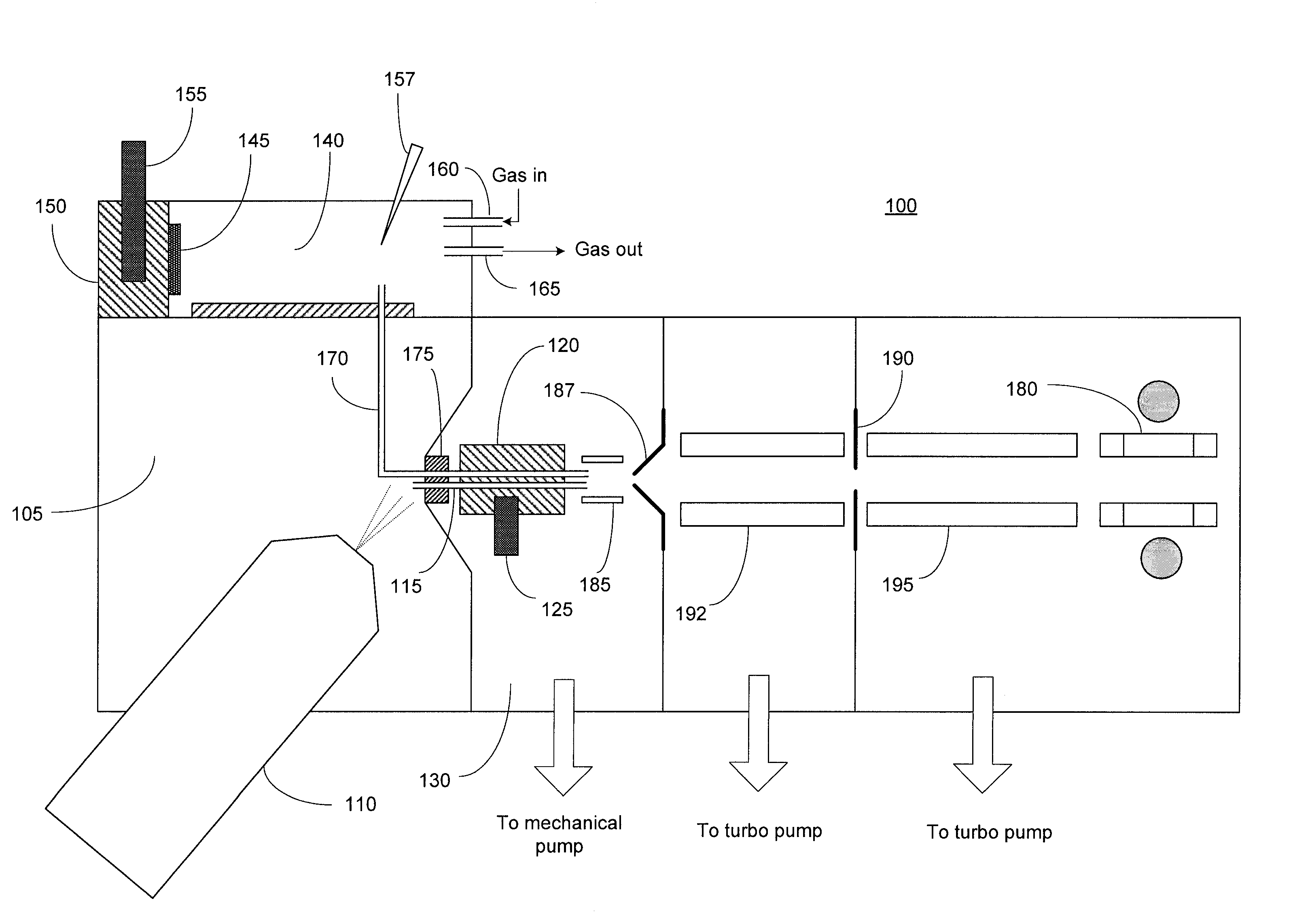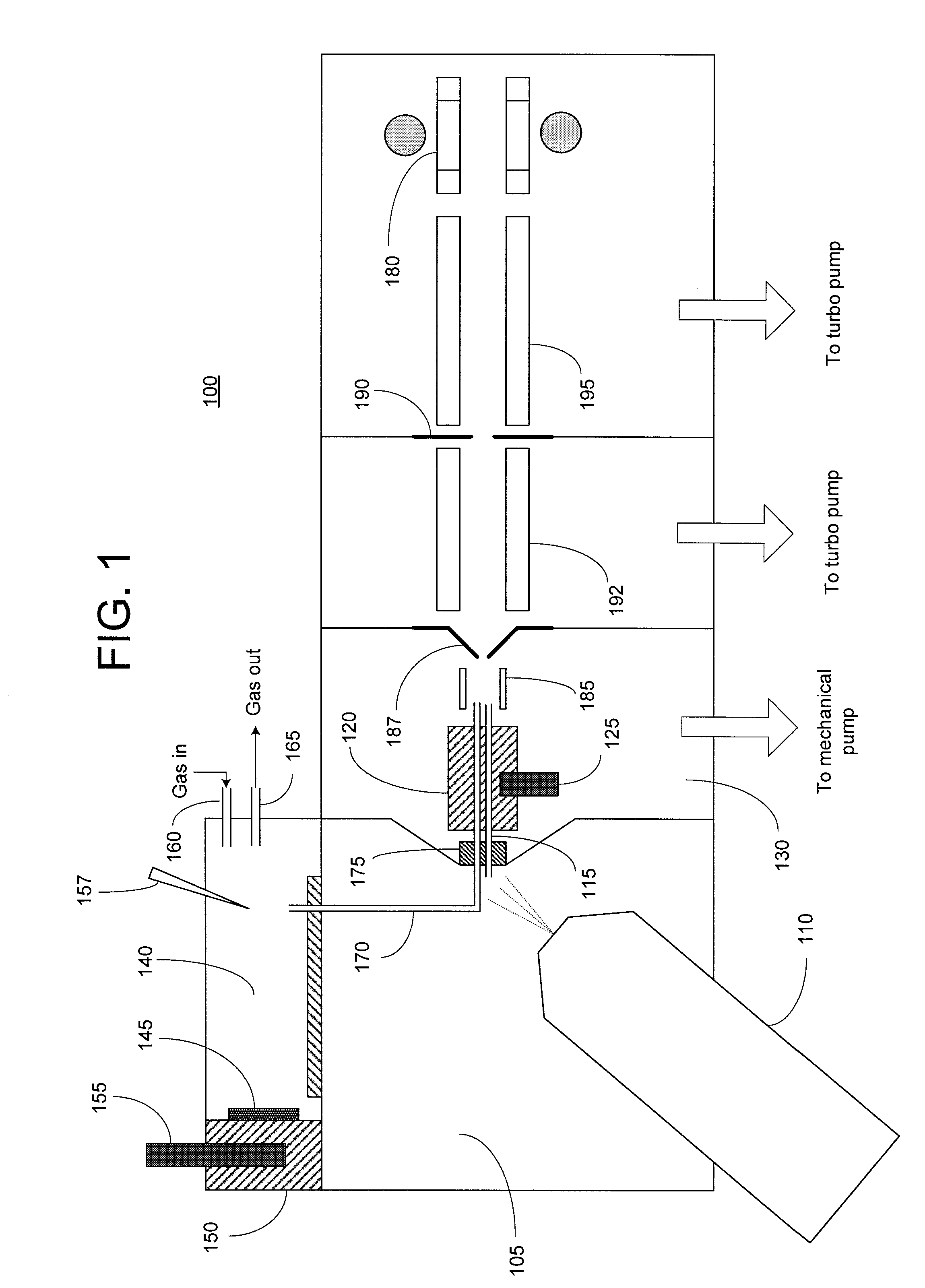Method and Apparatus for Generation of Reagent Ions in a Mass Spectrometer
a mass spectrometer and reagent ion technology, applied in the direction of particle separator tube details, dispersed particle separation, separation process, etc., can solve the problems of increasing instrument bulk, increasing manufacturing costs, and not using atmospheric pressure ionization techniques to produce reagent ions
- Summary
- Abstract
- Description
- Claims
- Application Information
AI Technical Summary
Benefits of technology
Problems solved by technology
Method used
Image
Examples
Embodiment Construction
[0009]FIG. 1 schematically depicts a mass spectrometer 100 incorporating an ETD reagent source according to an embodiment of the present invention. Analyte ions (typically multiply-charged cations) are formed by electrospraying a sample solution into an ionization chamber 105 via an electrospray probe 110. Ionization chamber 105 will generally be maintained at or near atmospheric pressure. The analyte ions, together with background gas and partially desolvated droplets, flow into the inlet end of a conventional ion transfer tube 115 (a narrow-bore capillary tube) and traverse the length of the tube under the influence of a pressure gradient. Analyte ion transfer tube 115 is preferably held in good thermal contact with a block 120 that is heated by cartridge heater 125. As is known in the art, heating of the ion / gas stream passing through analyte ion transfer tube 115 assists in the evaporation of residual solvent and increases the number of analyte ions available for measurement. Th...
PUM
 Login to View More
Login to View More Abstract
Description
Claims
Application Information
 Login to View More
Login to View More - R&D
- Intellectual Property
- Life Sciences
- Materials
- Tech Scout
- Unparalleled Data Quality
- Higher Quality Content
- 60% Fewer Hallucinations
Browse by: Latest US Patents, China's latest patents, Technical Efficacy Thesaurus, Application Domain, Technology Topic, Popular Technical Reports.
© 2025 PatSnap. All rights reserved.Legal|Privacy policy|Modern Slavery Act Transparency Statement|Sitemap|About US| Contact US: help@patsnap.com


